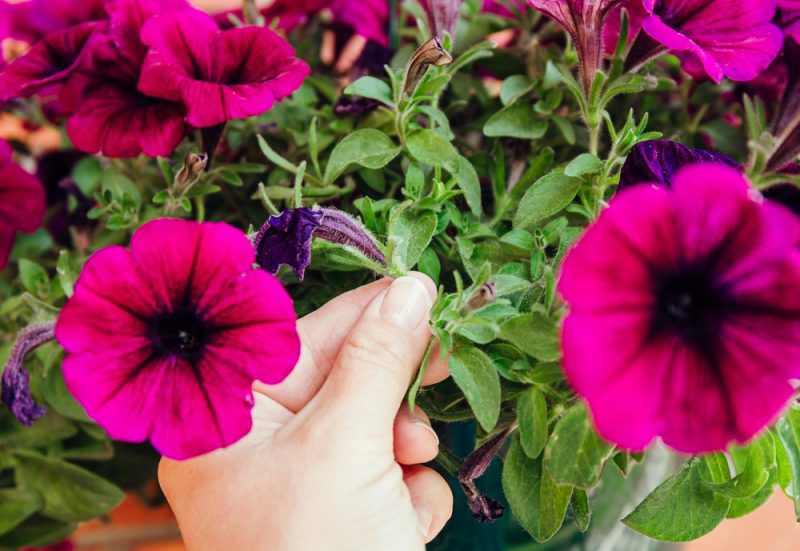Pinching Annual Plants for Better Growth
What Is Pinching?
It can be difficult to convince ourselves to pinch annual bedding plants, especially when they look perfectly healthy. But a snip early in the growing season can reap rewards the rest of the year. Pinching involves removing the growing tips of young shoots to promote branching. When we understand the reasons and mechanics, it’s easy to see why pinching annual plants promotes better growth and more blooms.
Pinching is a type of pruning in which the terminal bud or growing point of a shoot is removed. When we remove the shoot tip, we change the hormonal control regulating plant growth. Essentially, we are mimicking herbivory, telling the plant that it has been eaten and needs to grow more shoots. When you pinch the tip of the stem, the plant responds by growing two or more new shoots beneath the point of cutting.
How to Pinch Annuals
You need nothing more than your fingernails to remove those tender shoot tips, hence the name pinching. You can also use a flower snip or a small scissors to cut the shoot tips. To pinch plants, remove the shoot tip and first set of leaves, pinching just above the next node. A node is the point where a leaf or set of leaves attach to the stem. As a rule of thumb, annual bedding plants should be pinched back shortly after planting, when they are 12 to 18 inches tall.
Why Pinch Annuals?
It may seem a bit counterintuitive to cut back plants that we want to grow fuller and denser, but when we pinch annuals, that is indeed our goal. The central bud we remove during pinching is telling the plant to grow taller, but with pinching, we force the plant to grow outward, rather than just upward. When several stems are pinched back, the resulting branches can quickly fill out a plant. And with more branches producing flowers, pinching also yields higher bloom production.

Which Plants Benefit from Pinching?
Many of our annual bedding plants benefit from pinching, as do certain herbs. When we harvest the tips of a basil plant, we are essentially pinching it, encouraging the plant to respond with more vegetative growth. Basil plants should be pinched repeatedly throughout the growing season. The same is true of cutting flowers for bouquets. When we snip the ends of certain annual cutting flowers, the plants respond with new growth and fresh blooms.
The following annual plants benefit from being pinched early in the season.
- Basil
- Calendula
- Coleus
- Cosmos
- Impatiens
- Marigold
- Petunia
- Phlox
- Salvia
- Snapdragon
- Verbena
- Zinnia
Plants You Should NOT Pinch
Not all annuals benefit from pinching. For example, plants that produce a single, central stalk do not respond well. Nor do some early season annuals. Do not pinch the following annuals.
- Balsam
- Campanula
- Celosia
- Delphinium
- Dill
- Larkspur
- Poppy
- Stock
- Sunflowers

Some Perennials Like Pinching, Too
Many fall-blooming perennials also benefit from pinching early in the growing season. Pinching is a common practice for producing fuller, more floriferous chrysanthemums and asters. You can also pinch a portion of the stems to stagger bloom times of late-flowering plants like Russian sage and phlox. The pinched stems will flower later, extending to bloom season. Top-heavy sedums also benefit from pinching early in the season to promote denser, more compact growth. Stop pinching fall-blooming perennials by the 4th of July so they have time to develop flower buds.



You must be logged in to post a comment.